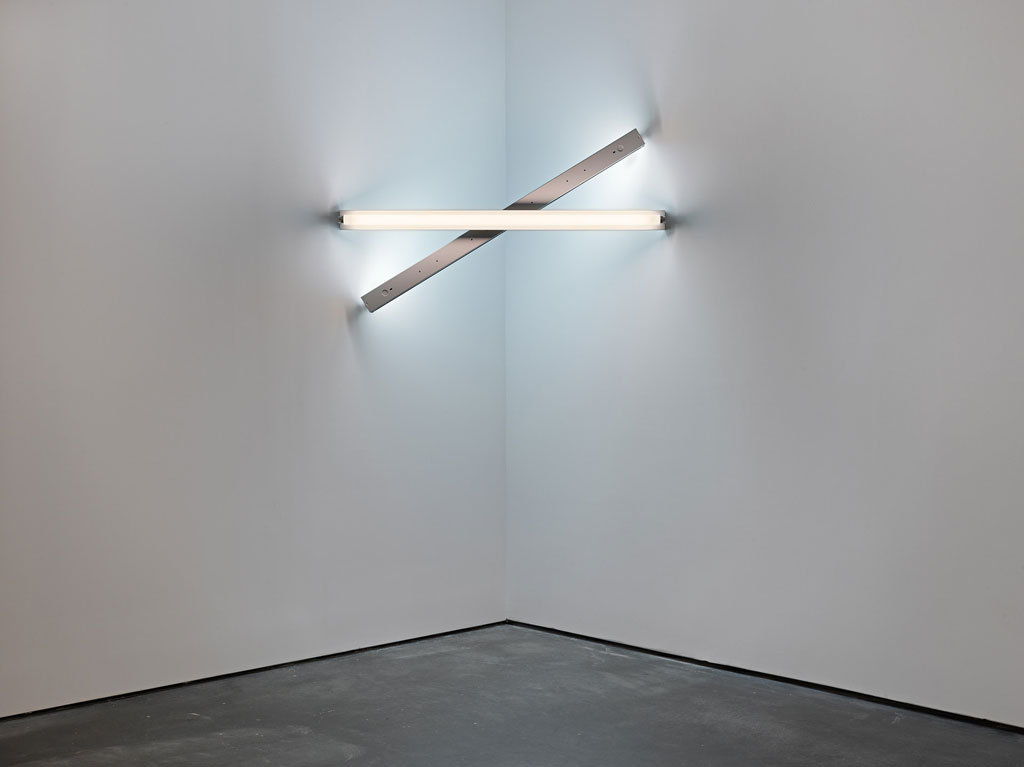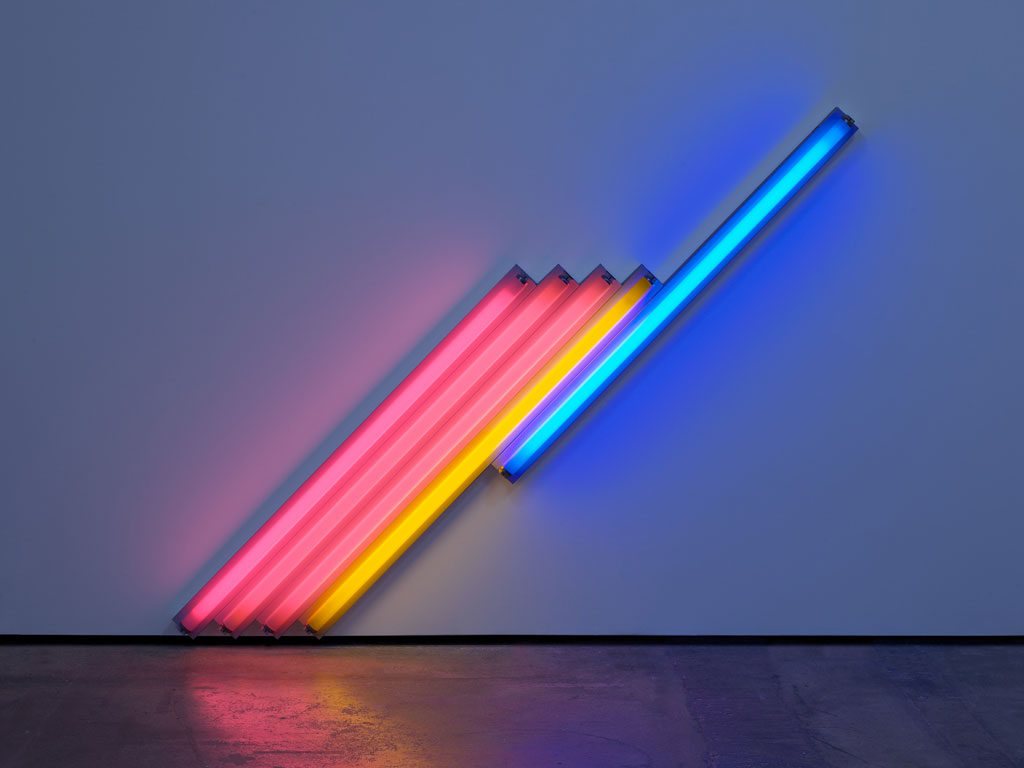ART CITIES:Paris-Dan Flavin
![]() Minimalism can be seen as extending the abstract idea that art should have its own reality and not be an imitation of some other thing. We usually think of art as representing an aspect of the real world (a landscape, a person, or even a tin of soup!); or reflecting an experience such as an emotion or feeling. With minimalism, no attempt is made to represent an outside reality, the artist wants the viewer to respond only to what is in front of them. The medium, (or material) from which it is made, and the form of the work is the reality.
Minimalism can be seen as extending the abstract idea that art should have its own reality and not be an imitation of some other thing. We usually think of art as representing an aspect of the real world (a landscape, a person, or even a tin of soup!); or reflecting an experience such as an emotion or feeling. With minimalism, no attempt is made to represent an outside reality, the artist wants the viewer to respond only to what is in front of them. The medium, (or material) from which it is made, and the form of the work is the reality.
By Efi Michalarou
Photo: David Zwirner Gallery Archive
After a brief stint at seminary and meteorological training in the military, Dan Flavin pursued his artistic studies in the late 1950s at Columbia University and the New School. By 1961, he had abandoned his early assemblages of found objects and begun his signature work: sculptural installations made from fluorescent light bulbs. Dan Flavin’s work is clean, industrially produced, and serially repeating. These qualities were developed in opposition to the gestural expressionist painting dominant in postwar American art. The use of ordinary light bulbs also references the twin modernist obsessions with pure technology and everyday life. By basing his work as much in radiated light as in the bulbs themselves, Flavin set the stage for much of the experience-oriented installation work that continues today. Spanning three decades of Dan Flavin’s career the exhibition at David Zwirner Gallery in Paris is the first major presentation devoted to the artis in the French capital since his 2006 retrospective at the Musée d’Art Moderne de la Ville de Paris. From 1963, when he conceived the “Diagonal of May 25, 1963 (to Constantin Brancusi)”, a gold fluorescent lamp installed diagonally on the wall, until his death, in 1996, Flavin produced a singularly consistent and prodigious body of work that utilised commercially available fluorescent lamps to create installations, or “situations” as he preferred to call them, of light and color. Spanning three decades of Dan Flavin’s career the exhibition at David Zwirner Gallery in Paris is the first major presentation devoted to the artis in the French capital since his 2006 retrospective at the Musée d’Art Moderne de la Ville de Paris. The exhibition includes key works from the artist’s career from the 1960s to the 1980s, exploring the breadth of formal and conceptual variation Flavin was able to achieve with fluorescent light. On view in Paris for the first time is be a large-scale, untitled “barrier” that was first installed by the artist in Donald Judd’s loft building in New York in 1970. The work cuts across the expanse of the gallery and dramatically bathes the space in blue and red fluorescent light, altering the viewer’s access to and perception of the surrounding architecture. Flavin’s barriers, the first of which was executed in 1966, radically establish and redefine space and are among the artist’s most significant works. As modular and serial structures, the barriers demonstrate Flavin’s centrality to minimal and conceptual art movements of the 1960s and 1970s and count among the earliest examples of what is now referred to as Installation Art. Also on view are key works that explore the subtle chromatic and perceptual possibilities afforded by the commercially available variations of “white” fluorescent light (cool white, daylight, warm white, and soft white). These include “Diagonal of March 27, 1964 (to David Smith)” (1964), a single-unit, cool-white lamp that leans against the wall and which is dedicated to the American abstract expressionist sculptor and painter David Smith and “untitled (to Cy Twombly) 2” (1972), an evocative corner construction of crossing cool-white and daylight lamps dedicated to American artist Cy Twombly. Also featured in the exhibition is an example of the artist’s lesser-known use of circular light fixtures, which are horizontally arranged in “untitled” (1973) in an alternating sequence of cool and warm white light. Flavin’s interest in the play of sequences and variations is further evidenced in “untitled (for Frederika and Ian) 1–4” (1987), a series of four individual works that each employ the same composition of five diagonally oriented lamps but whose colors vary according to a dynamic, permutational arrangement of red, pink, yellow, blue, and green light. Seen together, the works in the exhibition embody what Flavin described as his goal of producing “a sequence of implicit decisions to combine traditions of painting and sculpture in architecture with acts of electric light defining space.
Info: David Zwirner, 108, rue Vieille du Temple, Paris, Duration: 30/11/19-1/2/20, Days & Hours: Tue-Sat 11:00-19:00, www.davidzwirner.com


